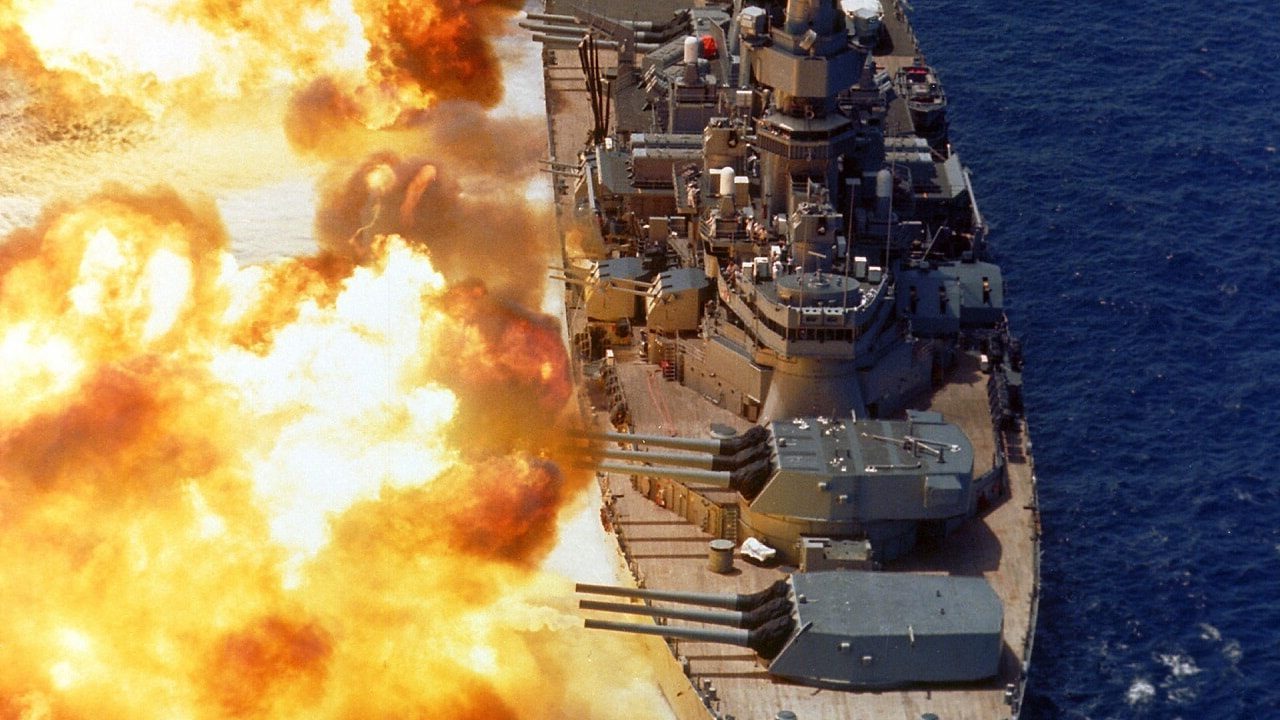The Iowa-class battleships consisted of six planned fast battleships. The U.S. Navy ordered the Iowa-class to be built in 1939 and 1940 – just in time for the nation’s most demanding naval conflict: the Pacific Theater of World War II.
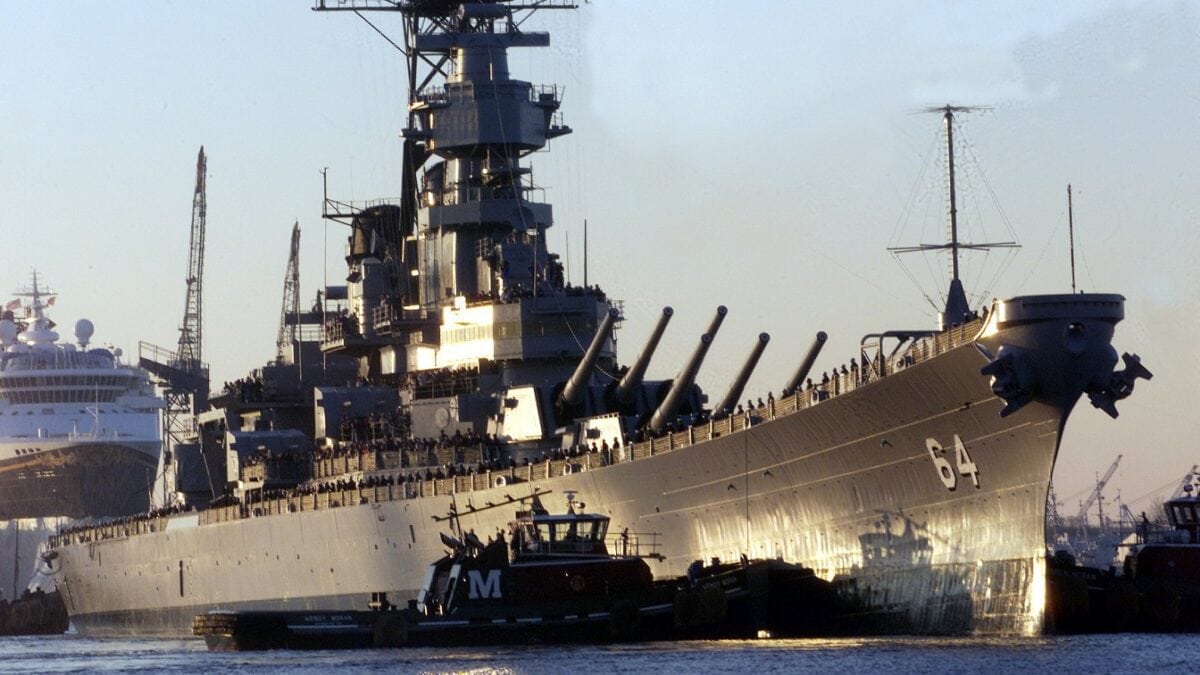
Iowa-class Battleship. Image Credit: Creative Commons.
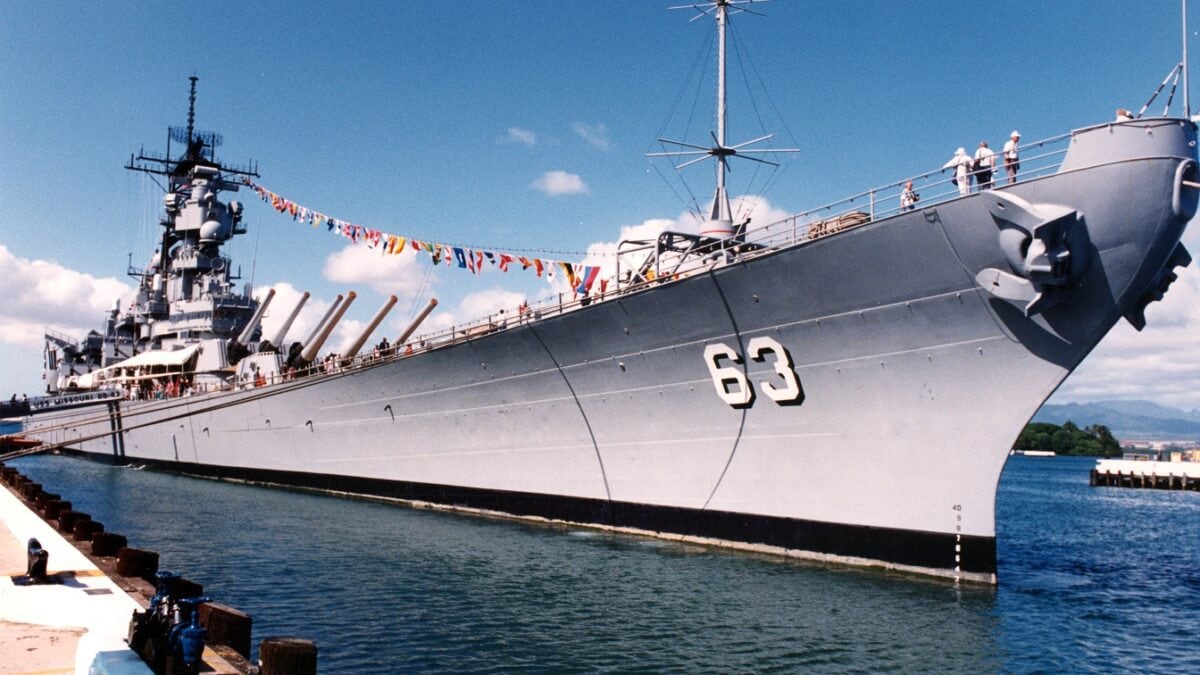
The battleship USS Missouri (BB-63) stands moored to a pier at Naval Station Pearl Harbor, Hawaii. Missouri is in Hawaii to take part in the observance of the 50th anniversary of the Japanese attack on Pearl Harbor.
While six Iowa ships were built, only four were ever commissioned: the Iowa, New Jersey, Missouri, and Wisconsin. The Illinois and Kentucky were laid down but canceled before being scrapped.
The Iowa-class ended up being the last battleships the U.S. Navy ever ordered – a symbol of a bygone generation in naval warfare. And many consider them the best of all the battleships that ever sailed.
What Made the Iowa-Class Special
The Iowa was built to be versatile. For one, designers hoped the Iowa could intercept fast capital ships, like the Japanese Kongo-class. Yet, designers also wanted the Iowa to have the firepower to participate in a standard battle line, right next to slower battleships, acting as a “fast wing.”
The ship’s design came from the U.S. Navy’s War Plan Orange, which was essentially the Navy’s game plan for war in the Pacific against the Japanese. War Plan Orange is generally critiqued for failing to anticipate the significance of technological advancements in naval warfare, including the submarine and aircraft carriers, although the plan did emphasize “island hopping,” which the U.S. did en route to Japan’s homeland.
War Plan Orange held that U.S. efforts in the Pacific would rely upon a long line of communication and logistics that would be especially vulnerable to high-speed Japanese cruisers. The U.S. was particularly worried that its slow-moving (21 knots) battle line would be too slow to force the Japanese into confrontation.
With War Plan Orange in mind, the Iowa-class was designed to be 860 feet at the waterline (887 feet total), with a 108-foot beam. The battleship had a full load displacement of over 57 tons. The Iowa was designed with a triple bottom beneath the armored citadel, plus armored skegs around the inboard shafts. The finished product displayed good stability – making the Iowa a capable gun platform.
The Iowa was also fairly maneuverable for its size, especially in the open water.
Iowa-Class: The Weapons
The Iowa relied on nine 16-inch 50-caliber Mark 7 naval guns for armament. The 66-foot long, 239-pound Mark 7 fired high explosive and armor-piercing shells, with a range of 23 nautical miles. The shells fired weighed 2,700 pounds and traveled at a velocity of 2,500 feet per second.
Despite the immense firepower of the Mark 7 guns, the Iowa also featured a secondary battery: twenty 5-inch 38-caliber Mark 12 guns.
In all, the Iowa packed a serious punch.
The History
The Iowa served in four major U.S. wars: World War II, Korea, Vietnam, and Operation Desert Storm. During World War II, the Iowa served as a carrier escort. In Korea, Vietnam, and Operation Desert Storm, the Iowa served primarily in a shore bombardment role. The Iowa also served as a constant reminder of U.S. naval supremacy throughout the Cold War. Accordingly, on account of such a long, storied tenure, the Iowa became culturally significant.
That significance is demonstrated in how frequently the Iowa appeared in the media: in the video game Neon Genesis Evangelion, in the History Channel series Battle 360: USS Enterprise, the Discovery Channel documentary The Top 10 Fighting Ships (which ranked the Iowa number one), Cher’s iconic “If I Could Turn Back Time” music video, the Steven Seagal film Under Siege, and the 2012 box-office flop Battleship (based on the board game of the same name). So, while the Iowa has been decommissioned, the ship lives on in the popular imagination, memorialized in a variety of media formats.
Pictures of the Iowa-Class
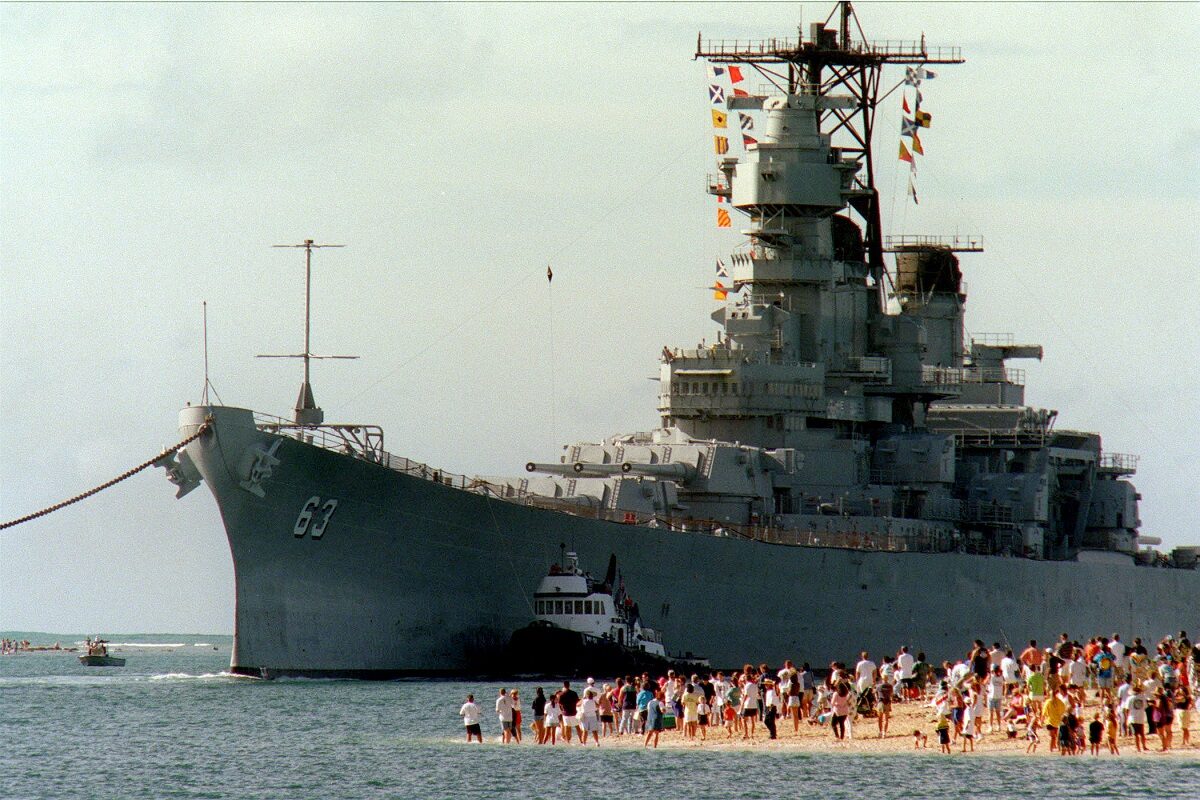
980622-N-2147W-001
People gather on the beach to see the battleship USS Missouri (BB 63) enter the channel into Pearl Harbor, Hawaii, on June 22, 1998. Secretary of the Navy John H. Dalton signed the Donation Agreement on May 4th, allowing Missouri to be used as a museum near the Arizona Memorial. The ship was towed from Bremerton, Wash. DoD photo by Petty Officer 1st Class David Weideman, U.S. Navy.
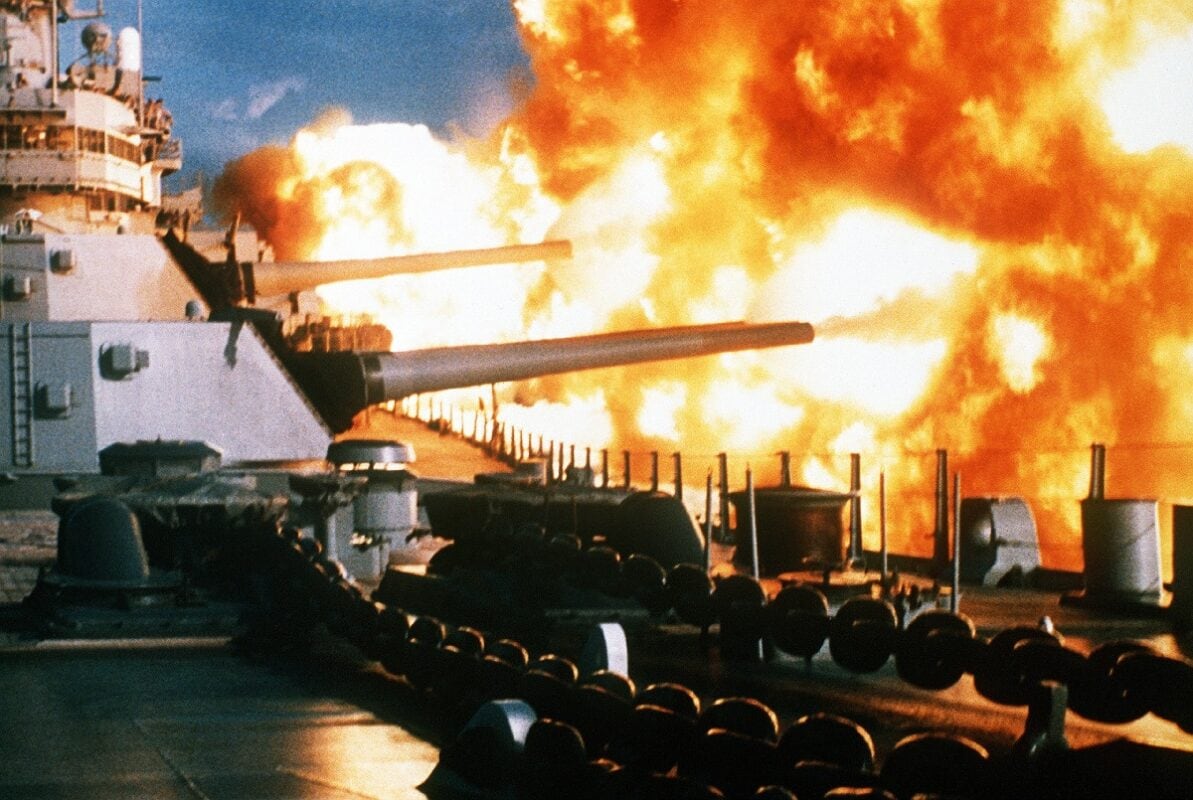
Iowa-class Battleship firing. Image: Creative Commons.
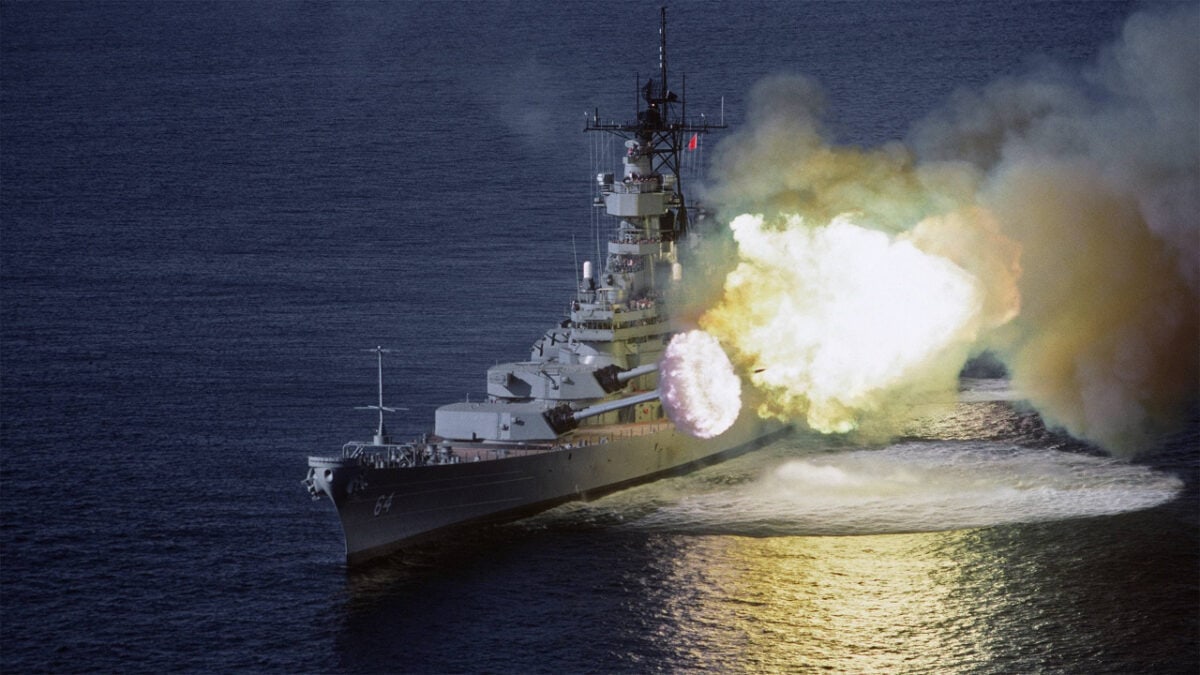
An Iowa-class Battleship firing. Image: Creative Commons.
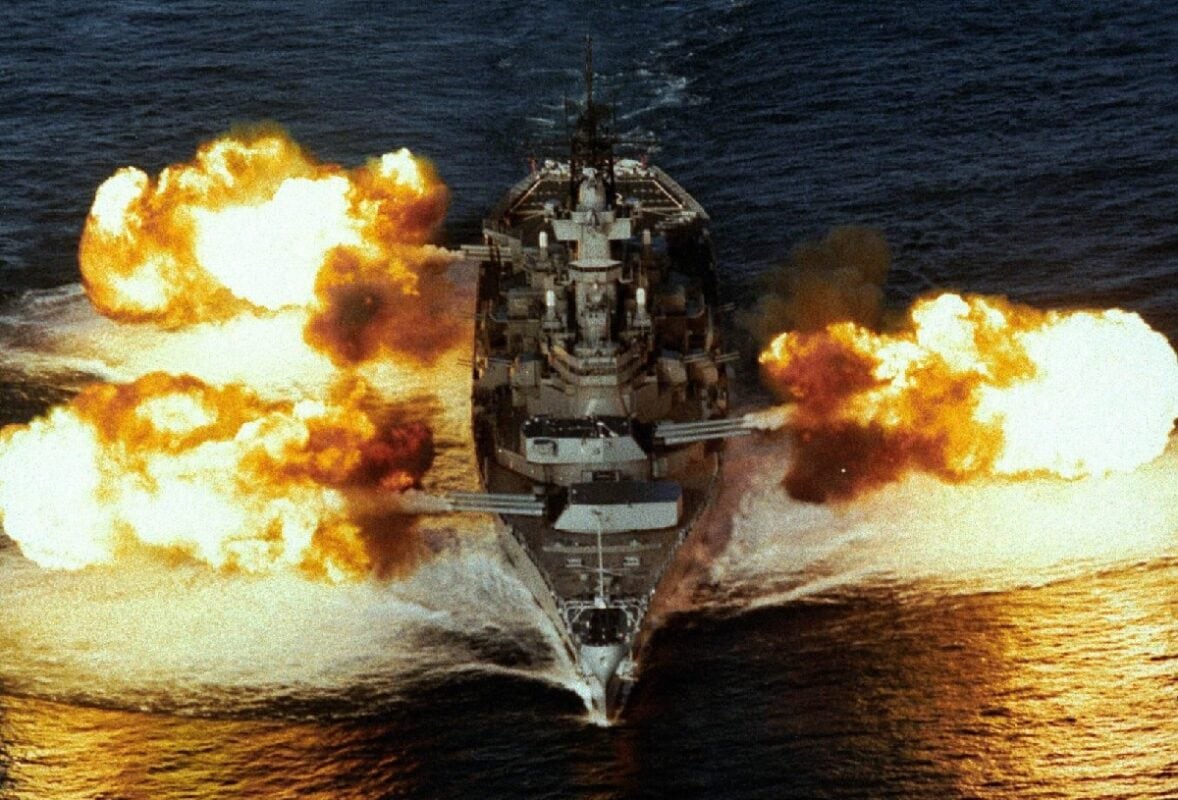
Image: Creative Commons.
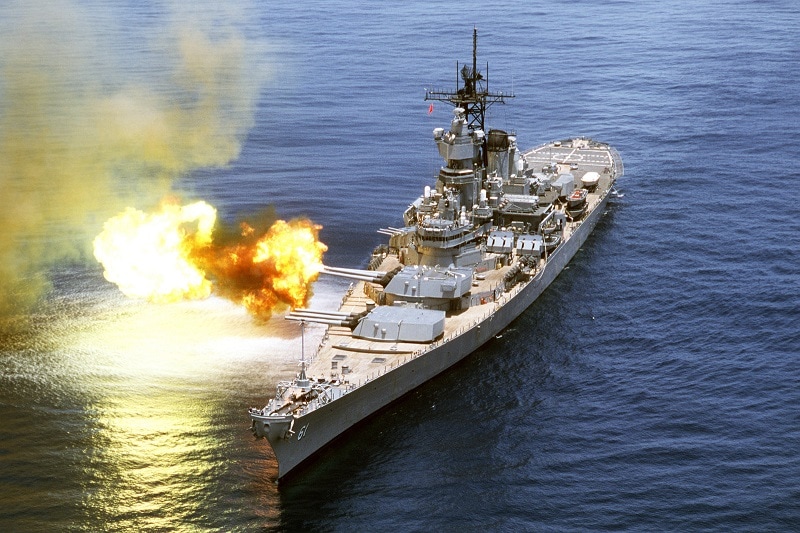
An aerial port bow view of the battleship USS IOWA (BB 61) firing its No. 2 turret 16-inch 50-cal. guns off the starboard side.
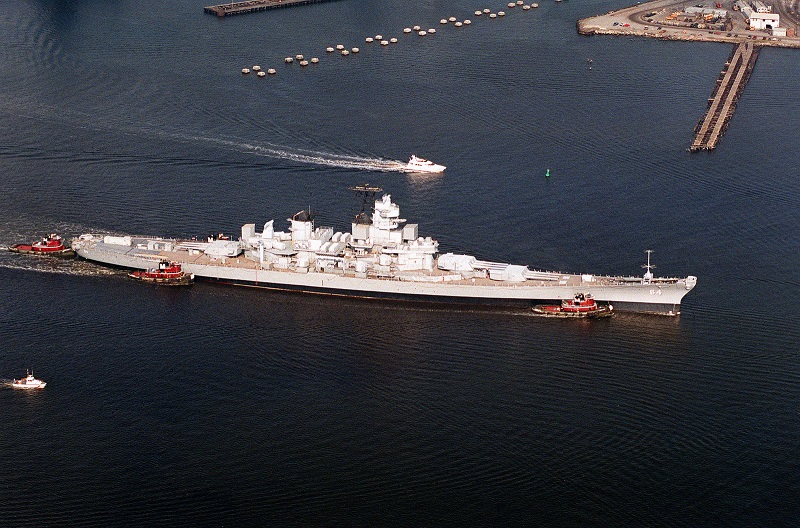
An aerial starboard side view of the Iowa class battleship WISCONSIN (BB-64) being towed past Norfolk Naval Base en route to the Norfolk Naval Shipyard at Portsmouth for ready reserve storage. The ship was moved from the Ship Intermediate Maintenance Facility when it was closed 30 September.
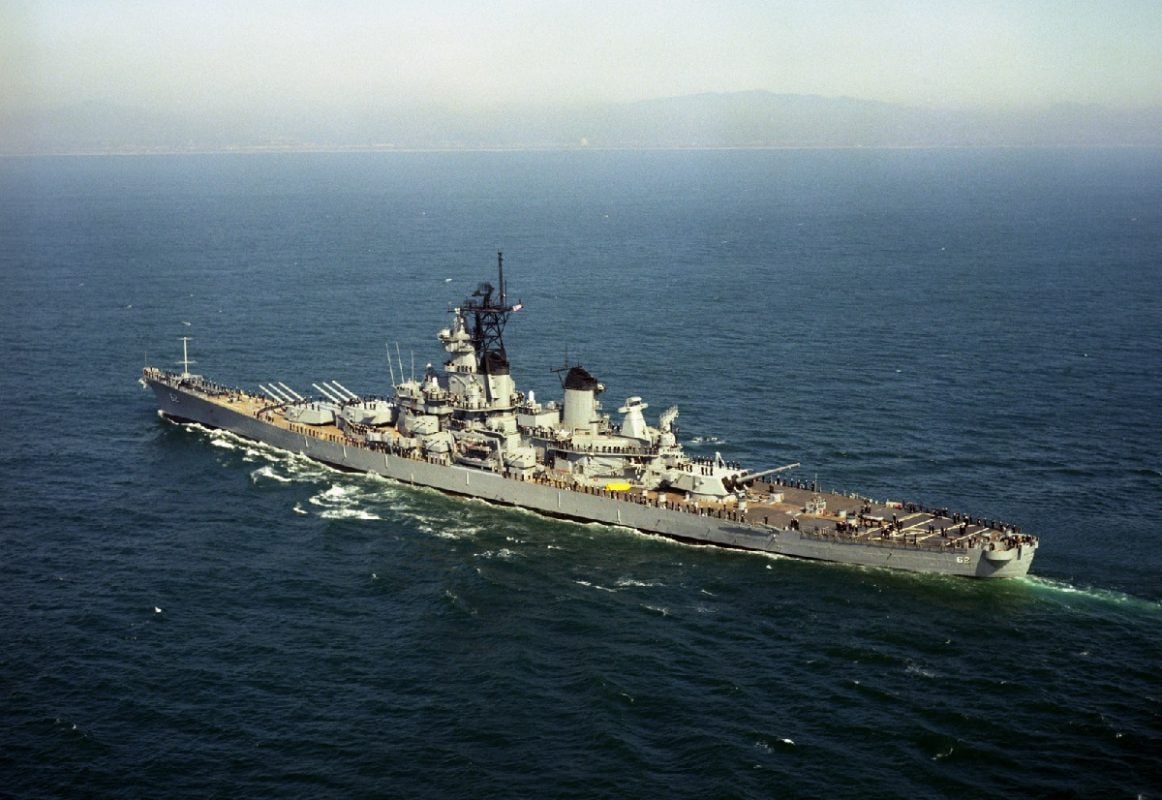
An aerial starboard view of the US Navy (USN) Iowa Class Battleship USS NEW JERSEY (BB 62) underway. Exact date shot unknown.
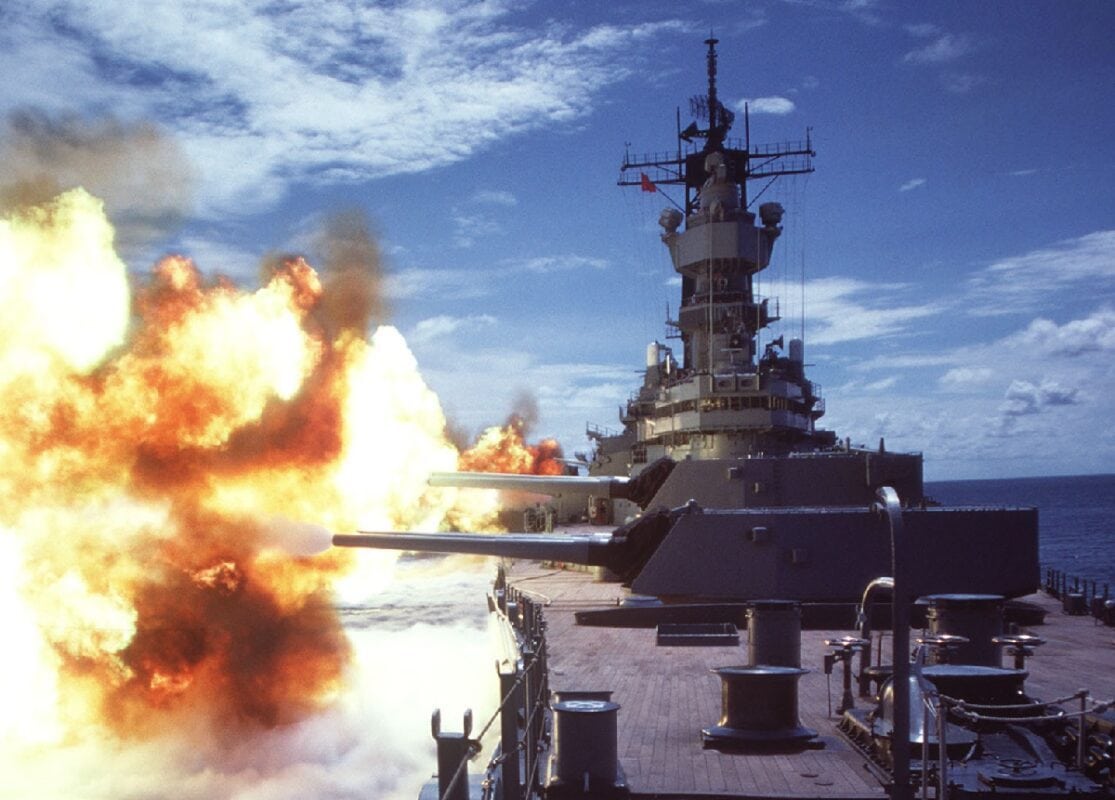
The battleship USS IOWA (BB 61) fires a broadside to starboard from its Mk 7 16-inch guns.
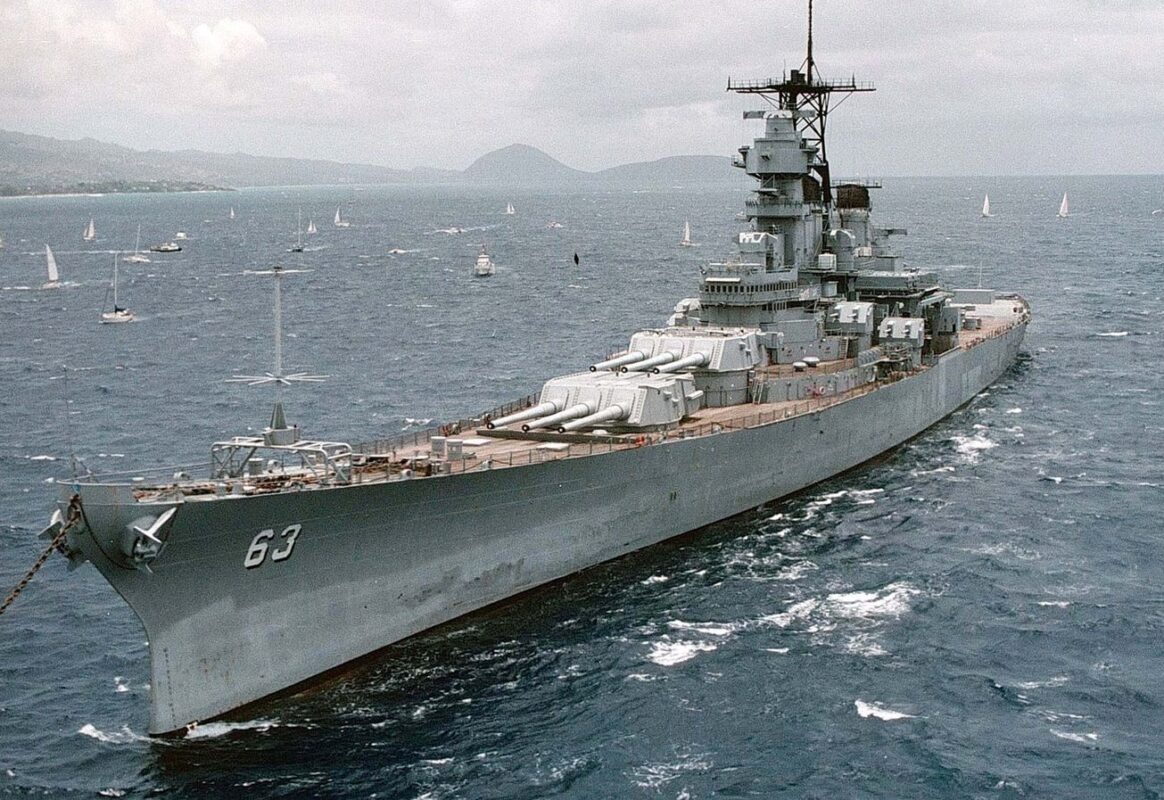
Iowa-class battleship. Image: Creative Commons.
Harrison Kass is the Senior Editor at 19FortyFive. An attorney, pilot, guitarist, and minor pro hockey player, he joined the US Air Force as a Pilot Trainee but was medically discharged. Harrison holds a BA from Lake Forest College, a JD from the University of Oregon, and an MA from New York University. He lives in Oregon and listens to Dokken.

